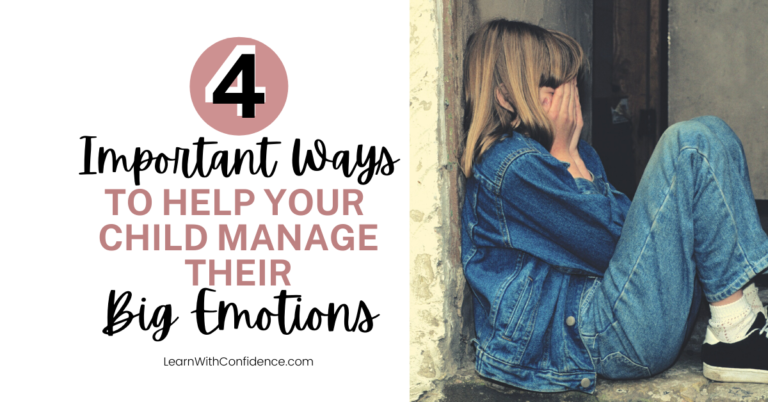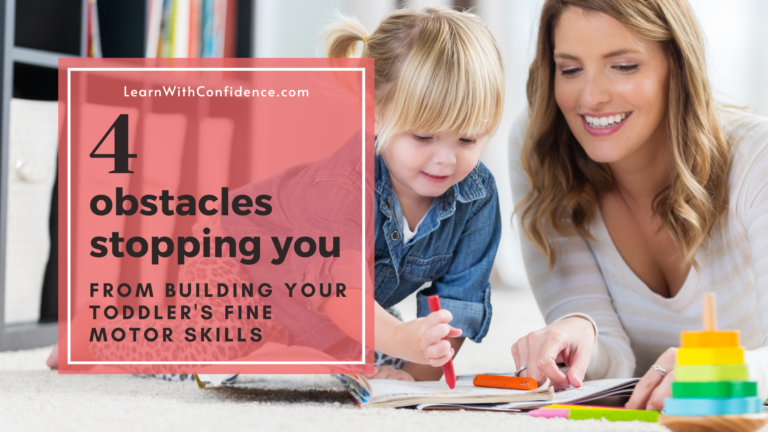Your Toddler’s Bedtime Meltdowns leaving you feeling like a Bad Parent? – Here’s what we did.
If you have experienced hysterical bedtime meltdowns with your toddler, you’ll know, there’s few things that are worse! The crying and wailing, the bargaining, the threatening, the frustration, the exhaustion. The guilt. It’s a terrible thing to watch your child unhinge and lose it just before they’re supposed to drift off to sleep. It’s an even more terrible thing to feel powerless to help them, ill-equipped change this pattern and in general, like an awful parent.
I’ve been there, Mamma! And it was…well…you know!
But, this post is here to bring you a little hope. We discovered a way to eliminate our bedtime meltdowns and have our kiddies drift off in a calm and peaceful atmosphere. I want to share that with you today – this may be the solution you need for your family right now.

This post may contain affiliate links. If you use these links to buy something I may earn a commission, at no extra cost to you. Thank you for supporting me!
Out of control bedtime meltdowns
Let me tell you all about how our bedtimes used to look.
We finish up with dinner, it’s time to brush teeth, pick a story and then it’s bed time. I can feel the dread rising – every night it’s been the same. I know what’s going to happen.
We’ll get through the story, then she’ll ask for milk. We’ll read our Bible story next and then she’ll say she’s thirsty, hungry or wants to go to the toilet. It’s lights out time. Eventually after all the stalling that can happen has happened and we have had to put our foot down and say “no”, she’ll start to cry and get upset. Then it escalates. Eventually, it’s a full-on meltdown. For 30 minutes or more.
The bargaining, the threatening of consequences, the screaming, the crying, the throwing of toys and pushing over of furniture. It was out of control! Eventually she would relent and get into bed and fall asleep. Probably from the sheer exhaustion of it all.
And she wasn’t the only one exhausted!
Are those late, hysterical nights wearing you down and making you feel like an awful parent?
Let me walk you through our strategy to transform your toddler’s bedtime meltdowns.
Something HAD to change
Eventually we had had enough – this was NO way to end the day. Our hearts were broken seeing her like this every night.
She shouldn’t go to sleep so wired, stressed out and worked up! Her last memory before she finally drifts off should not be of mom or dad’s angry faces and threats of losing privileges. She needed more rest than she was getting because of these late and hysterical bedtime meltdowns.
Neither my husband nor I wanted to be the crazy-dragon-parents we were currently being with our own frustrations and emotions escalating to this degree.
I was filled with worry and guilt every bedtime. For my eldest – that this crazy meltdown thing was damaging her somehow, and damaging our relationship with her. For my second – that watching this craziness was making her anxious and compliant out of fear. For my third – who’s only a tiny baby – what influence was this even having on her!?
Something had to change. And soon.
So when that last hysterical bedtime meltdown had finally passed and she was in bed, I sat scrolling through article after article searching for whether all this was “normal”, if there was a possible solution…and maybe a little validation that I wasn’t the awful parent I felt I was at that moment.

What we did to stop the bedtime meltdowns
There is a load of advice out there about how to stop the bedtime meltdowns in toddlers. And yes, I’m happy to tell you – it can be a very normal thing for some children. There are a host of interacting factors that can cause your child to feel afraid or anxious or upset at bedtime that can easily escalate into a bedtime meltdown like the ones we were experiencing.
That night, my husband and I strategized. We came up with a plan for how things were going to be, moving forward. Here are the things we having been putting in place. And they are producing results!
1) A Clear Routine
Kids need routine. And so do we as parents.
There’s something about knowing what comes next. Not having to think through the steps involved in doing something. In just doing those steps automatically to accomplish a goal.
There’s a sense of stability and security in routine.
So that’s what we did – we established our afternoon/evening routine. And we’ve stuck to it.
Just a note here on routines and schedules – there is actually a difference. Routines are the step-by-step process. Schedules are time-bound. So a routine can be time-bound or it doesn’t have to be. For example, our routine is generally time-bound, but if we have dinner at the grandparents and all the times for supper, bedtime, etc have to change, it’s ok because the routine (the step-by-step process, the order of events) can remain the same.
Here’s an idea of our routine:
- 16:00 TV time / Free play time (Mom cooks supper)
- 17:00 Bath time / Get clothes out for tomorrow
- 18:00 Supper
- 18:45 Get ready for bed (brush teeth, find stories, etc)
- 19:15 Story time
- 19:45 C – lights out. L – play quietly for 10-15min in bedroom
- 20:00 L – lights out.
2) A Few Rules or Boundaries
We had to also lay down some rules, some boundaries if you prefer, around bedtime. We use the word “rules” because our kiddies know that word better than the word “boundaries”.
These rules allow a little less wriggle-room for that whole bargaining thing our toddlers are so adept at doing. Will they push against those rules. Yes. It’s in their nature.
Some of the things we had to think about when we set these rules were:
- What things are the children using to stall and get out of going to bed on time?
- How many rules do we actually need to set to get the desired result?
- How are we going to enforce these rules? And if there will be consequences, what will they be?
As I said earlier, wanting another story, milk, water, food, going to the toilet – these were the stalling techniques. (And here’s a problem I was struggling with – if my child is thirsty or hungry or needs the toilet (even if she has a nappy on), those are like basic needs! I can’t deny her those things!) But some boundaries had to be set around those things.
We decided on just a few boundaries or rules because, firstly, who needs a long list of rules to adhere to just before bed! And second, as little people, there’s no way they’ll even remember more than 2 or 3 rules anyway.
Our bedtime rules (or boundaries) are:
- No more food after supper time, eat until you’re satisfied at supper time. (L felt hungry at bedtime because she wasn’t eating her supper.)
- One story each and a Bible story
- One bottle of milk, when lights go out. If you’re still thirsty, you can have a little water (which we put a small amount in a bottle on their nightstands).
- (And the issue of the needing to go to the toilet was solved when they weren’t drinking a load of liquid at bedtime anymore!)
Enforcing these rules has been about establishing them first and then being consistent.
So we sat one bedtime and told them, these are the rules: 1-2-3. They understood. And when bedtime came and they wanted another story, we’d just remind them of the rule that there’s one story each and a Bible story – we’ll read more stories tomorrow! Every time they push that boundary, we remind them of the “rule” and over time they have stopped the negotiations and have accepted is.
Was it a smooth easy process? No, I won’t lie to you. It took some time. Do those rules get bent and even broken sometimes? Yes. Of course! But we do our best to stick with those rules and remain consistent and we’ve seen the fruits of that labor!

3) Bedtime fading strategy
This has probably had the most significant impact on our bedtime meltdowns. Routines and Rules are the long term supports that you need but this short term strategy reset our bedtimes. This process does take a bit of time and you’ll need to be strict with times and consistent while you reset your child’s bedtime. But once you’re there you’ll be grateful you took the time to do it!
This is our strategy, you can read more about bedtime fading here and decide how to do it according to your family’s specific needs and circumstances.
The basic idea of the theory behind this approach is that your child is having trouble at bedtime because his or her natural sleep-awake rhythm (circadian rhythm) is off. So you need to reset it.
We established what our child’s current sleep time is and what her desired sleep time is.
You need to calculate what your child’s bedtime should be based on how many hours of sleep they need in a 24 hour period (based on their age and stage of development). Subtract the number of hours they sleep at nap times during the day. And then work it back from their time of waking in the morning, to when they should be going to sleep at night.
L’s current bedtime was after 21:00 after her bedtime meltdown. And we worked out that her desired bedtime should be 20:00.
Then we started with the bedtime fading strategy.
The first night, we let her play quietly in her room til 21:00 and then it was lights out. We observed when she was getting more sleepy and is ready to get into bed. She should fall asleep within 15-30 minutes after lights out. If she didn’t, the next night we’d turn off the lights at 12:15.
We did this for the first 2-3 nights. Then we could establish where we were working from.
After this, every couple of nights, we moved the lights out time 10-15 minutes earlier than before. Every time you move the lights-out time, your child should fall asleep within 15-30 minutes. Eventually, you can reach the desired bedtime.
In my FREE Fight-Free Bedtime Strategy Planner, I will guide you through this process so you can reset your child’s bedtime and enjoy an earlier night too!
4) Some other important things
Here are a few important points we found helped us, if you want to make this process easier and more effective:
Make sure you’re on the same page as your partner.
Work on your strategy together, or at the very least have his buy-in so there’s nothing sabotaging your attempts to get rid of these bedtime meltdowns.
Keep things calm and escalation free around bedtime.
In every way. Dim or turn off lights, turn off music or loud sounds, remove distractions like TV or other screens. Speak in a calm way about everything, slow down your speech, lower your tone of voice. No more rushing around. No arguing. Set the tone in such a way that your child feels that “we’re winding down for bedtime now”.

Food and screens do have an influence.
These are extensive topics for another day, but, here’s the simple version: Eat a healthy, filling, sustained-energy supper. Avoid sweet and sugary things, in general, but especially before bedtime. Don’t allow your child to watch or play on screens right before bedtime – allow at least 30-60 minutes.
Every child is different and every situation is unique.
There are a lot of factors influencing our little people and so your set of circumstances are undoubtedly different to mine. Just keep that in mind when you’re applying these principles and strategies.
Another important thing to remember is that there can be deeper reasons why your child has bedtime meltdowns. Trust your gut here, Mamma, and if you think there’s a deeper problem, don’t hesitate to go to a physician or specialist to check it out!
No more bedtime meltdowns now!
Well, generally. (And if they happen they’re definitely not to the degree we used to have!) Because life sometimes happens: Routines do get messed up every now and again. Little people have a hard day and they’re over-tired or over-stimulated. Parents have a rough time at work and our patience and tolerance levels are way down.
Let me tell you where we’re at right now – Man! I can’t tell you how happy it makes me to tell you this.
- We have peaceful bedtimes. No more crying, shouting or hysteria. No more late nights. No more feeling like a bad mom (at least not about bedtimes…).
- L feels special because she gets a little extra play time than her sisters because she’s older. And she gets some quality time with mom or dad without the little sisters around.
- C and G can go to bed earlier and without the stressful and emotional stimulation of a bedtime meltdown.
- Hubby and I can actually spend some quality time together in the evenings or catch up on some work or even get an early night!
If you’re in the same boat as we were.
First of all I want you to know you’re not alone! I know the frustration, the pain, the exhaustion, the guilt of watching your child lose it every night just before they’re supposed to drift off to la-la-land! I’ve been there – sitting in the dark, tears streaming down my face after the most awful bedtime meltdown. Countless other Mommas are where you are right now!
You are not a bad mom. You are not “messing up” your child. You love your child and you want the best for them. And you’ll do what it takes to help them have what they need. You are going to make some changes. You are going to put some key things in place to transform this situation.
You are not going to allow this challenge you’re facing to determine your success as a parent.
You can see results. You can have happy, peaceful, fight-free bedtimes.

I would love to connect with you and include you in this community of Mommies as we support each other and grow together to become the best moms we can be!
Please subscribe to my emailing list here and I’ll make sure I keep you in the loop on all the latest blog posts, freebies and resources!
Some other resources you may find useful:







